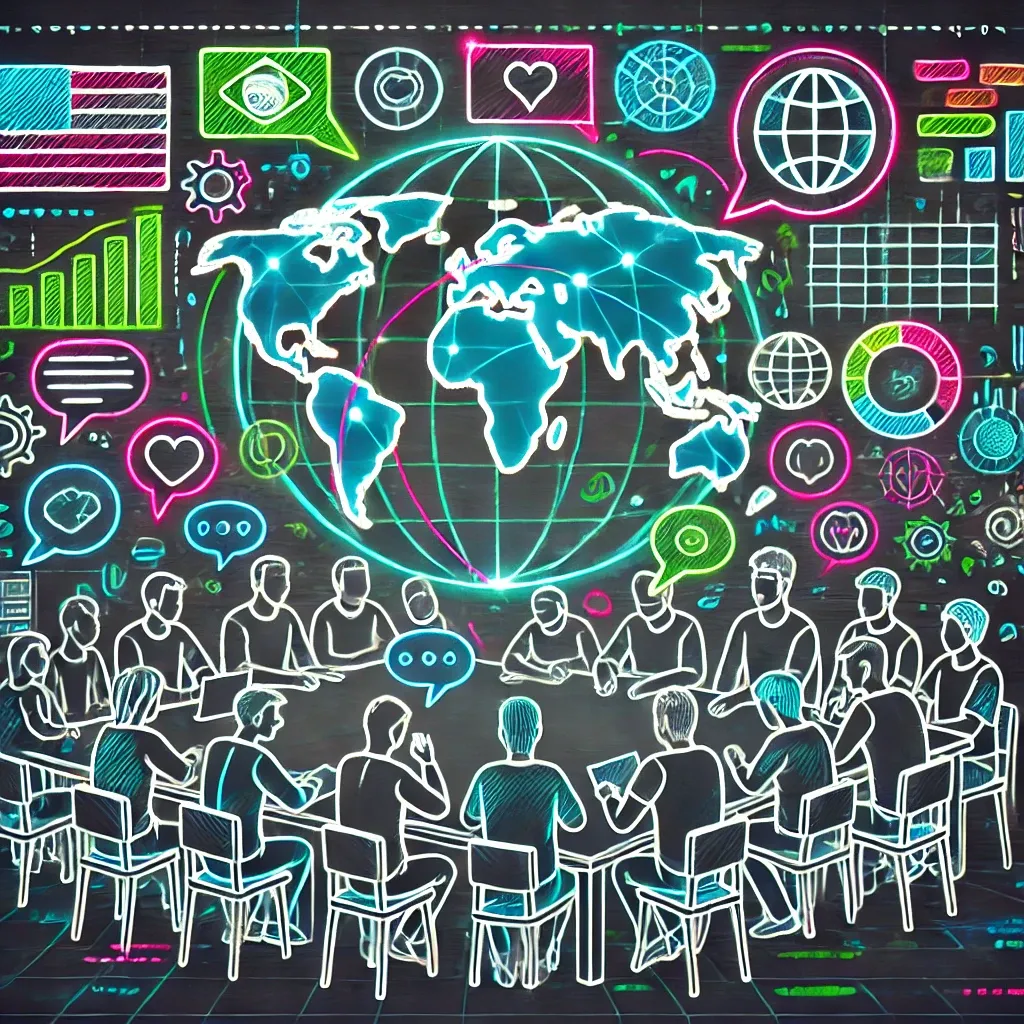Cultural Adaptability in Global Dev Teams: Thriving in Diversity
Explore how cultural adaptability in global dev teams fosters innovation, inclusivity, and effective collaboration in the tech industry.

Chances are, you’re working with people across multiple time zones, each bringing their own unique perspectives and approaches to work. Cultural adaptability is a critical skill for thriving in today’s tech industry.
Successfully navigating the cultural diversity within development teams means understanding and valuing differences, leveraging those differences to foster innovation, and building a cohesive unit that can tackle challenges effectively.
Let’s explore the importance of cultural adaptability, the challenges of working in global teams, and strategies to enhance your ability to collaborate across cultures.
🔑 Key Takeaways 🔑
- Cultural adaptability helps harness the power of diversity in development teams, leading to greater innovation.
- Communication differences and cultural misunderstandings are challenges that need intentional strategies to overcome.
- Developing cultural awareness, providing intercultural training, and embracing diverse perspectives are practical ways to enhance adaptability.
The Value of Cultural Diversity
Driving Innovation
Working in culturally diverse development teams is like having access to a buffet of ideas—you’re not limited to the same old dish every time. Diverse perspectives contribute to unique, creative solutions, and that’s exactly what you want in a field like software development, where innovation is key. When team members come from different cultural backgrounds, they bring different ways of thinking about problems, leading to approaches that a more homogeneous team might not consider.
Balancing Leadership Dynamics
Leadership in a culturally diverse team requires sensitivity and a bit of finesse. It’s essential to balance leadership dynamics by encouraging open communication and giving everyone a chance to step into leadership roles where appropriate. For example, adopting a rotational leadership approach—where different team members take the lead on various projects—ensures that no single cultural perspective dominates decision-making. This kind of balance helps build inclusivity and allows each team member to feel valued, which is particularly important when teams span multiple cultures.
Challenges of Cultural Diversity in Teams
Managing Communication Differences
One of the biggest challenges in cross-cultural teams is communication. Different cultures have distinct norms for non-verbal cues, conversation styles, and even how they give and receive feedback. Misunderstandings can easily occur when someone interprets direct communication as rude or a reserved approach as disengagement. Understanding these differences is crucial for preventing miscommunications that could derail projects. For leaders, it’s about recognizing these nuances and adapting your communication style to meet the needs of your culturally diverse team.
Handling Conflict Resolution
Conflict is inevitable in any team, but how you handle it can either tear your team apart or make it stronger. In cross-cultural settings, different approaches to conflict resolution can become a significant challenge. For example, in some cultures, direct confrontation is seen as a healthy way to resolve issues, while in others, maintaining harmony is more important. To navigate these waters, leaders must be attuned to cultural preferences and create an environment where differing approaches to conflict are respected. This could mean mediating in a way that allows all voices to be heard without anyone feeling attacked.
Strategies for Enhancing Cultural Adaptability
Cultural Awareness and Competence
Developing cultural awareness is the first step toward enhancing cultural adaptability. This doesn’t mean you need to become an expert in every culture represented on your team, but rather be open and curious about differences. Providing intercultural training sessions can help team members understand diverse work styles, reduce the likelihood of misunderstandings, and build empathy across the team. Regular training sessions make a significant difference in helping everyone feel included and valued, ultimately improving team cohesion and productivity.
Technology as an Enabler
Let’s not forget the role of technology in bridging cultural gaps. Tools like translation features in communication platforms can make conversations smoother, especially when there are language barriers. Moreover, project management tools like Trello or Asana can help align different cultural approaches to workflows, making it easier for everyone to understand project statuses and expectations regardless of background.

Practical Steps for Developing Cultural Adaptability
Workshops and Intercultural Training
To foster cultural adaptability, it’s crucial to provide opportunities for intercultural training. Workshops that focus on intercultural competence help team members understand different work styles and cultural nuances, making collaboration smoother. These sessions can cover topics like how to interpret different communication styles or how to navigate cultural differences in conflict resolution. Ultimately, this type of training builds the adaptability required to thrive in a multicultural development environment.
Celebrating Cultural Diversity
Recognizing and celebrating the diverse backgrounds within your team helps create a sense of belonging. For example, acknowledging important cultural holidays, or even having a “cultural day” where team members share stories about their background, fosters inclusivity. When people feel that their culture is valued, they’re more likely to be open, engaged, and adaptable when working on challenging projects.
Conclusion
Cultural adaptability is more than just a nice-to-have; it’s a necessity for global development teams. By recognizing the strengths that diversity brings, effectively managing communication and conflict, and fostering an environment that values cultural awareness, your team can leverage the full power of its diversity. In doing so, you’re not just solving problems—you’re innovating and pushing the boundaries of what’s possible in software development.
Ready to enhance cultural adaptability in your team? Start with intercultural training sessions and embrace the diversity within your team—it’s the key to thriving in a global industry.




